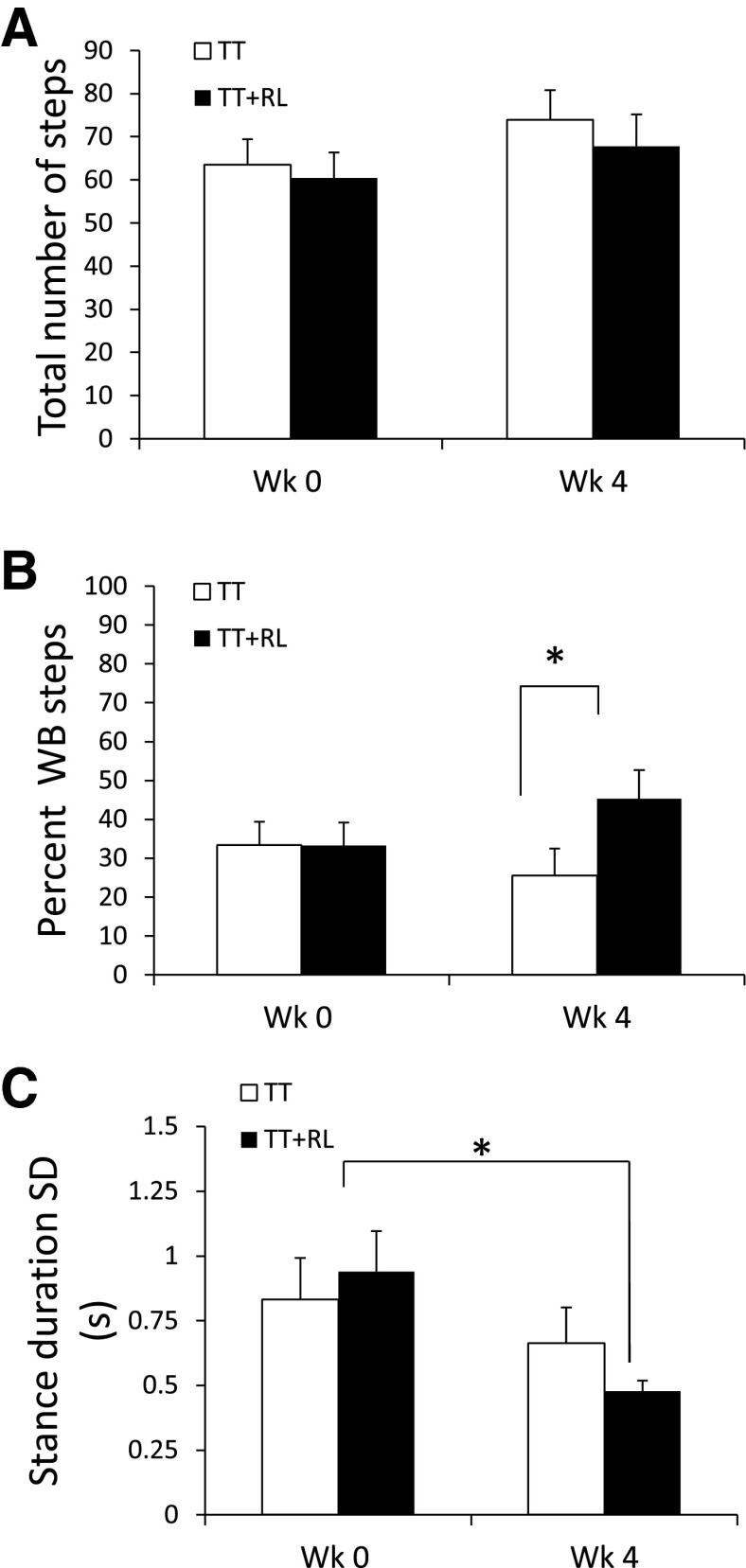Fig. 2.
One group received daily bipedal treadmill training with robotic-enhanced loading (TT+RL) while the other group received bipedal treadmill training without robotic-enhanced loading (TT). The total number of stepping movements (A), the percentage of weight-bearing (WB) steps (B), and the stance duration standard deviation (C) are shown for the TT and TT+RL groups. The data are from tests of stepping performed at weeks 0 and 4. The total number of steps is all of the weight-bearing and nonweight-bearing stepping movements in the hindlimbs that were performed during 30 s of testing. Weight-bearing steps were defined as steps that were >1 mm in length. The percentage of weight-bearing steps is the number of weight-bearing steps/total number of steps. White and black bars indicate the average data for the TT and TT+RL groups, respectively. Standard errors of the average are shown (n = 8 in each group). *Significant difference between the TT and TT+RL groups (P < 0.05).

